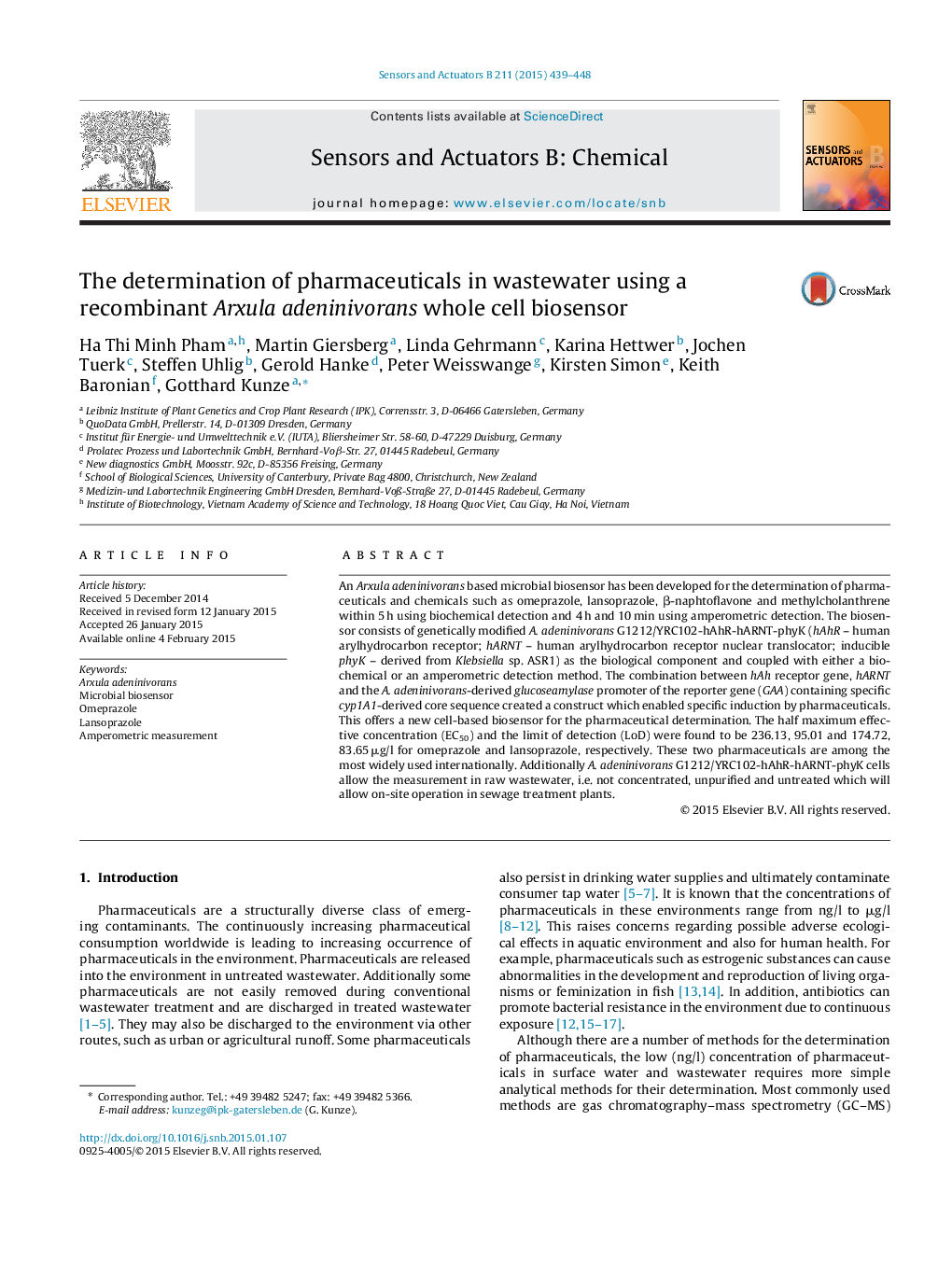| Article ID | Journal | Published Year | Pages | File Type |
|---|---|---|---|---|
| 750768 | Sensors and Actuators B: Chemical | 2015 | 10 Pages |
An Arxula adeninivorans based microbial biosensor has been developed for the determination of pharmaceuticals and chemicals such as omeprazole, lansoprazole, β-naphtoflavone and methylcholanthrene within 5 h using biochemical detection and 4 h and 10 min using amperometric detection. The biosensor consists of genetically modified A. adeninivorans G1212/YRC102-hAhR-hARNT-phyK (hAhR – human arylhydrocarbon receptor; hARNT – human arylhydrocarbon receptor nuclear translocator; inducible phyK – derived from Klebsiella sp. ASR1) as the biological component and coupled with either a biochemical or an amperometric detection method. The combination between hAh receptor gene, hARNT and the A. adeninivorans-derived glucoseamylase promoter of the reporter gene (GAA) containing specific cyp1A1-derived core sequence created a construct which enabled specific induction by pharmaceuticals. This offers a new cell-based biosensor for the pharmaceutical determination. The half maximum effective concentration (EC50) and the limit of detection (LoD) were found to be 236.13, 95.01 and 174.72, 83.65 μg/l for omeprazole and lansoprazole, respectively. These two pharmaceuticals are among the most widely used internationally. Additionally A. adeninivorans G1212/YRC102-hAhR-hARNT-phyK cells allow the measurement in raw wastewater, i.e. not concentrated, unpurified and untreated which will allow on-site operation in sewage treatment plants.
